October’s display on fashion and music show cases three items from LCF Special Collections that focus on music scenes in the UK, via a London-centric lens. Five corresponding texts from the main collection are presented giving a deeper insight into the Mod, Punk and Indie scenes referenced. What follows are key quotes from the texts that weave the exhibition together:
Fashion and Music, Janice Miller, 2011
“Fashion and music are two intimately connected forms of worldliness, two social practices that go hand in hand, sustaining one another in the medium of mass communication and drawing on a common sensibility which translates into taste.”
“Fashion and style present a means by which fans can create cultures and communities and make visible their fan identities.”
Mod! A Very British Style, Richard Weight, 2013
Soho “was home to the British music industry from the 1920s until the 1980s and much of the advertising, film, broadcasting and publishing industries too. Until 2011, Soho also embraced Central St Martin’s School of Art, one of the powerhouses of British design, and the London College of Fashion is not far away, in Oxford Street.”
“Even if you were an oik at heart, you wanted to be classy. It was the original wannabe culture. Wannabe boys and girls, wanna create, wannabe rich, wannabe famous, wannabe loved, wannabe known.”
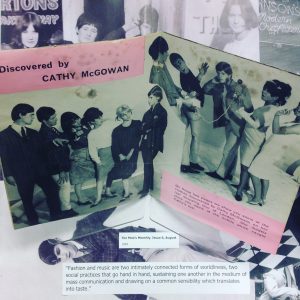
The Bag I’m In, Sam Knee, 2015
“Unique to this island, the music and fashion scenes are ingrained in the UK’s DNA, going hand in hand as an inseparable force of nature that shapes our lives and society we exist in.”
“Scenes are forever entangled with shifts and crossovers; parallel strands breaking out into new dimensions of reinvention, rapidly running their course and burning out.”
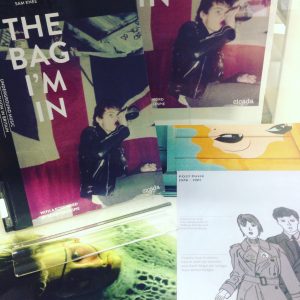
Sex & Seditionaries, PunkPistol, 2006
“Great Britain is unique in the amount of youth orientated tribes it has borne – all of them music related in some way.”
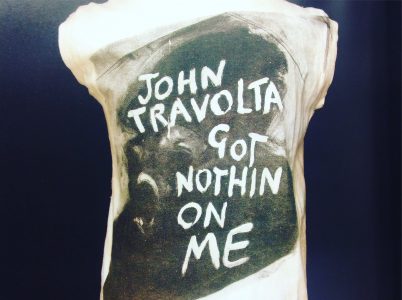
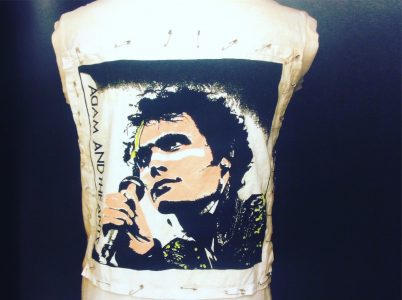
A Scene In between: tripping through the fashions of UK indie music 1980-1988, Sam Knee, 2013
“These scenesters were outfitted, for the most part, in a mish mash of 50s and 60s second hand clothes which were still readily available for pennies from charity shops, jumble sales and flea markets….This was a subtle subversive reaction and rejection against the clichés yuppie flamboyance as purveyed by the mainstream.”
Contemporary indie and the construction of identity : discursive representations of indie, gendered subjectivities and the interconnections between indie music and popular fashion in the UK, Rachel Lifter, 2012
This PhD aims to “re-examine what is often seen to be an opposition between youth culture, on the one hand, and popular fashion and consumer culture, on the other, focusing specifically on the relationship between indie and popular fashion in the UK.” and “it problematizes the way in which contemporary indie forms precisely at the point of blurring among youth culture, music and popular fashion.”
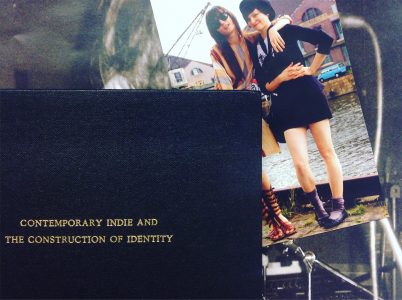
The Look: adventures in pop & rock fashion, Paul Gorman, 2001
“The 90s were the first decade in half a century to produce no significant youth movement, at least one which had the tabloids trembling in fear, such as the zoot suit rioters of the ‘40s, the cinema-seat-shredding teds of the 50s, the mods and rockers of the 60s, the punks of the 70s and the made-up crossdressers, hardcode hip-hoppers of the 80s. These days, when Sonic Youth and the Jon Spencer’s Blues Explosion pose for Calvin Klein advertising campaigns and Iggy Pop flexes his mutant torso for Donatella Versace’s show in Milan, the fire has disappeared from fashion and music.”
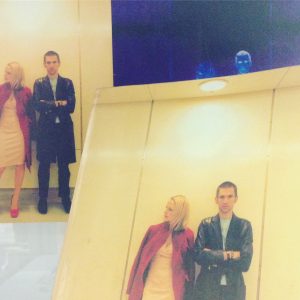
Justyna Burzynska
LCF Special Collections